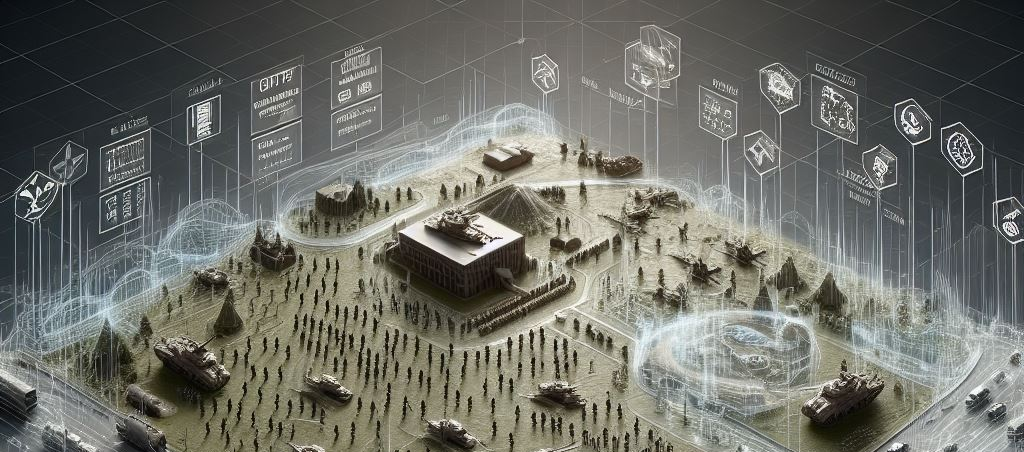In our ever changing cybersecurity threat landscape, software vulnerabilities and security defects lay like buried landmines, threatening to detonate your organization’s security posture. Security teams overreacting to every blip on their threat radar, however, is akin to playing whack-a-mole and causes teams more and more alert fatigue. That’s where Vulnerability Disclosure Reports (VDRs) and Vulnerability Exploitability eXchange (VEX) emerge as a useful detection tools, helping you navigate the vulnerability minefield with precision and efficiency.
VDRs: A Transparent Map of the Battlefield

Imagine a detailed map, meticulously marking every pothole, ditch, and, yes, even potential explosives on your software landscape. That’s essentially what a VDR does. It’s a comprehensive list of known vulnerabilities affecting your product or its components, including the notorious CVE identifiers, the potential blast radius (impact), and, most importantly, a blueprint for defusing the threat (mitigation plans).
By proactively publishing VDRs, you achieve tactical transparency. Customers and developers gain a clear picture of the potential threats, allowing them to prioritize patching and fortify their defenses. This fosters trust and strengthens your brand image, demonstrating a commitment to responsible security practices.
But VDRs offer more than just transparency. They empower you to triage the battlefield:
- Prioritization: VDRs help you identify and prioritize the most critical vulnerabilities based on their severity and potential impact. No more scrambling to fix every paper cut while neglecting gaping wounds.
- Resource allocation: With a clear understanding of the threat landscape, you can allocate resources efficiently, focusing patching efforts on the most pressing issues and avoiding wasting time on minor skirmishes.
- Streamlined assessment: VDRs serve as a centralized repository of vulnerability information, eliminating the need for tedious, repetitive scanning and assessment. Think of it as consolidating your intelligence reports into one actionable document.
VEX: Separating the Exploitable from the Elusive
VDRs are your map, but sometimes the map doesn’t tell the whole story. Enter VEX, your field report revealing which buried “bombs” are actually duds. A VEX focuses specifically on vulnerabilities within your product or component and clarifies whether they can be exploited, in your specific context.
This might sound like stating the obvious, but it’s crucial. Imagine spending precious resources patching a vulnerability that, when deployed in your specific environment, is as harmless as a water balloon. VEX helps you avoid these costly false alarms.
Think of VEX as adding context to your VDR map:
- Reduced noise: VEX cuts through the static of irrelevant vulnerabilities, allowing you to focus on the actual threats that pose a risk in your specific ecosystem.
- Cost-effective remediation: By prioritizing exploitable vulnerabilities, you allocate resources efficiently, reducing the time and money spent on unnecessary patching.
- Context-aware awareness: VEX empowers users to understand the true risk posed by vulnerabilities in their specific environment, allowing them to make informed decisions about mitigation and patching.
Hand-in-Hand: A Synergy of Security Tools

VDRs and VEX are not rivals vying for dominance; they’re complementary forces working in tandem to strengthen your security posture. Think of them like two soldiers, one scouting the terrain (VDR), the other verifying the enemy’s presence (VEX). Together, they paint a clearer picture of the battlefield, enabling you to strategize your defense effectively.
The Road Ahead: Keeping Your Defenses Sharp
Remember, the vulnerability landscape is constantly evolving. To maintain your advantage, keep these points in mind:
- Accuracy and timeliness: Ensure your VDRs and VEXs are updated promptly with the latest vulnerability information. A stale map is as useless as a compass with a broken needle.
- Integration: Seamlessly integrate VDR and VEX data into your existing security tools and workflows for a holistic view of your security posture.
- Openness and collaboration: Foster a culture of open communication and collaboration with your vendors and suppliers to ensure timely vulnerability disclosure and accurate VEX reports.
By embracing VDRs and VEX as your security allies, you can navigate the ever-shifting vulnerability landscape with confidence. Remember, in the digital battlefield, information is power, and these tools empower you to make informed decisions, prioritize effectively, and ultimately protect your organization from the ever-present threat of cyberattacks.
Resources:
- OWASP: Vulnerability and Exploitability Transparency – VDR & VEX: https://owasp.org/blog/2023/02/07/vdr-vex-comparison
- CycloneDX: Vulnerability Exploitability eXchange: https://cyclonedx.org/capabilities/vex/
- NIST SP 800-161: Cybersecurity Supply Chain Risk Management Practices for Systems and Organizations
AI Prompts:
These are the generative AI prompts used while creating this blog post.
Create a simple outline for an article describing how companies can use Vulnerability Disclosure Report (VDR) and Vulnerability Exploitability eXchange (VEX) in their security programs.Cybersecurity minefield
A transparent map of a battlefield
Two hands shaking a synergy of security tools



